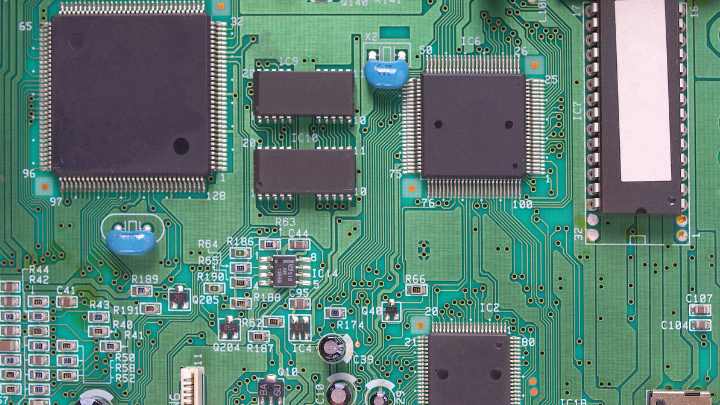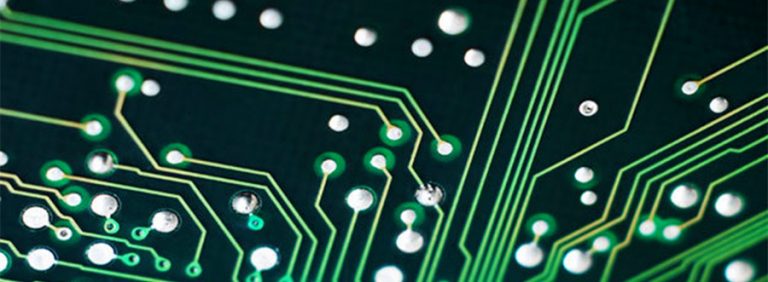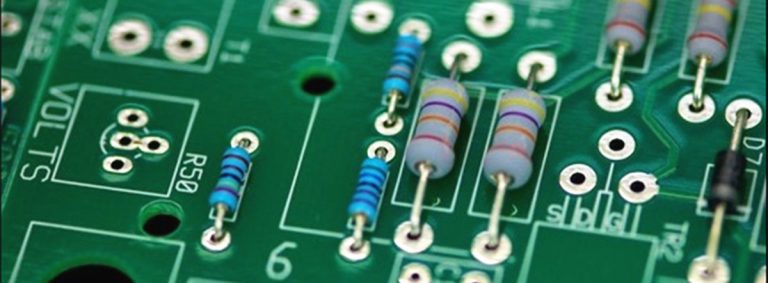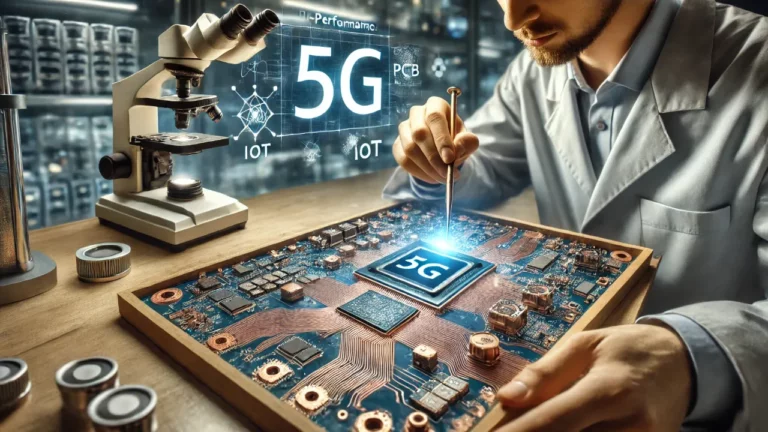The Ultimate Guide to PCB Surface Finishes: Making the Right Choice
Diving into the world of PCBs can be a thrilling adventure, especially when you’re faced with the dazzling array of PCB Surface Finishes. But fear not! You’ve just stumbled upon the ultimate guide that’s about to make your decision-making journey a breeze. Whether you’re trying to grasp the basics of what these finishes are or delving deep into why they’re so crucial, this guide has got you covered. From a detailed overview of the different types available, weighing their pros and cons, to understanding the factors that should influence your choice, we’ve laid it all out.
And that’s not all! We’ll also shed light on the latest trends shaking up the PCB world, the nitty-gritty of budgeting for these finishes, and eco-friendly choices that are kinder to our planet. And for those hungry for real-world insights, we’ve got riveting case studies that unpack both successes and lessons learned. So buckle up and get ready to embark on a comprehensive journey into the world of PCB Surface Finishes!
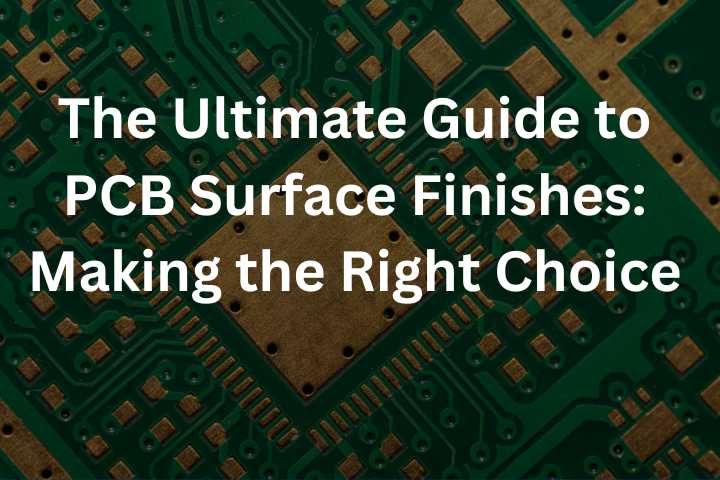
1. What Are PCB Surface Finishes?
Definition for PCB Surface Finishes
PCB Surface Finishes are protective coatings applied to the exposed copper of a printed circuit board (PCB). These finishes serve multiple purposes, including preventing oxidation, enhancing solderability, and ensuring the PCB’s longevity. Given the variety of applications and environments in which PCBs operate, selecting the appropriate surface finish is vital to ensure the board performs optimally throughout its life.
The Role of PCB Surface Finishes
One of the primary enemies of copper is oxidation. When left unprotected, copper can react with oxygen in the environment, leading to the formation of copper oxide. This oxide layer can compromise the board’s electrical conductivity, causing it to malfunction or even fail. Enter PCB Surface Finishes. Acting as a barrier, these finishes prevent the exposed copper from coming into direct contact with the ambient air, thereby warding off the threat of oxidation.
2. Why Do PCB Surface Finishes Matter?
Beyond Protection: Enhancing Functionality
While protection against oxidation is a primary function, PCB Surface Finishes offer more. They play a crucial role in enhancing the solderability of the board. In the world of electronics, soldering components onto a PCB is like establishing connections in a vast city network. The surface finish ensures that these connections are robust, reliable, and long-lasting. Without a suitable finish, solder might not adhere properly, leading to weak joints and potential failures.
Ensuring PCB Longevity
PCBs are expected to perform consistently over prolonged periods, often under varying conditions. Whether it’s inside a smartphone, a satellite, or an industrial machine, a PCB’s environment can be quite demanding. PCB Surface Finishes contribute significantly to the board’s durability. By providing a protective layer, these finishes shield the board from environmental factors that could otherwise shorten its lifespan.
The Importance of Choice
Given the plethora of applications and environments where PCBs find their place, one might wonder if a single type of surface finish is sufficient. The reality is that there’s no one-size-fits-all. Depending on the specific requirements and challenges of each application, selecting the most appropriate surface finish becomes crucial. It’s this choice that often determines whether a PCB will perform optimally throughout its intended life.
PCB Quality Control
3. Different Types of PCB Surface Finishes: An Overview
When diving into the realm of Printed Circuit Boards (PCBs), one quickly realizes the multitude of choices available for surface finishes. Each finish type brings its unique set of properties, advantages, and potential challenges. The selection of the right finish can greatly influence the board’s performance, longevity, and reliability. Let’s explore some of the most commonly used PCB Surface Finishes in the industry. Compare specific finish types like ENIG and HASL in-depth in our article on ENIG vs HASL
Hot Air Solder Leveling (HASL)
One of the most traditional and widely used surface finishes is Hot Air Solder Leveling, often abbreviated as HASL. This process involves immersing the PCB in molten solder, which coats the exposed copper surfaces. Subsequently, hot air knives level the solder to create a smooth finish. HASL is particularly popular due to its PCB manufacturing cost, and the fact that it provides a reliable surface for soldering. However, it might not be ideal for very fine-pitch components due to potential unevenness.
Electroless Nickel Immersion Gold (ENIG)
ENIG has gained significant traction in recent years, especially for high-density boards. This two-layered coating process starts with the deposition of nickel onto the copper, followed by a thin layer of gold. The gold protects the nickel during storage, while the nickel provides a robust and solderable surface. ENIG’s flatness makes it suitable for fine-pitch components, though it tends to be pricier than HASL.
Organic Solderability Preservative (OSP)
OSP is an organic finish that’s applied directly to the exposed copper. It’s a thin, environmentally friendly layer that protects the copper from oxidation. OSP is cost-effective and offers a smooth surface for soldering. However, its shelf life can be shorter compared to other finishes, and it might not be as robust in multiple reflow processes.
PCB Immersion Silver
Another finish that’s been growing in popularity is Immersion Silver. This process involves depositing a thin layer of silver directly onto the copper. It offers excellent solderability and a flat surface, making it suitable for a range of applications. However, one must ensure proper storage to prevent tarnishing.
PCB Immersion Tin
Immersion Tin involves coating the PCB’s copper with a thin layer of tin. It provides a very solderable surface and is often used for press-fit pin insertion processes. The primary concern with Immersion Tin is the potential for tin whiskers, which are tiny hair-like growths that can cause short circuits.
4. Pros and Cons: Analyzing Popular PCB Surface Finishes
The Quest for the Perfect Finish
In the intricate world of Printed Circuit Boards (PCBs), selecting the right surface finish can be a balancing act. Each finish comes with its unique set of advantages and potential drawbacks. Understanding these can significantly influence the performance, longevity, and cost-effectiveness of a PCB. Let’s dive into some of the most popular PCB Surface Finishes and dissect their pros and cons.
Hot Air Solder Leveling (HASL)
Pros:
- HASL is one of the most budget-friendly options available.
- With its longstanding history, HASL is well-understood and trusted within the industry.
- If errors occur, HASL boards can be reworked.
Cons:
- The finish may not be perfectly even, which can be problematic for fine-pitch components.
- The unevenness can cause issues in high-frequency applications.
Electroless Nickel Immersion Gold (ENIG)
Pros:
- ENIG provides an exceptionally flat surface, ideal for fine-pitch and high-density components.
- The nickel-gold combination is robust, ensuring longevity.
- Suitable for multi-layered or complex boards due to its reliability.
Cons:
- ENIG tends to be more expensive than HASL.
- There’s a potential for a defect known as “black pad syndrome,” which can compromise solder joints.;
Organic Solderability Preservative (OSP)
Pros:
- OSP offers a very flat and smooth finish.
- As an organic finish, OSP is environmentally friendly.
- It’s generally more affordable than finishes like ENIG
Cons:
- OSP coatings can degrade over time, reducing their effectiveness.
- OSP might not withstand multiple reflow cycles.
Immersion Silver
Pros:
- Immersion Silver provides a surface that’s great for soldering.
- Like ENIG, it offers a flat surface suitable for fine-pitch components.
Cons:
- If not stored properly, Immersion Silver can tarnish.
- It’s more sensitive to handling, as fingerprints and contaminants can affect performance.
Immersion Tin
Pros:
- Solderability: Immersion Tin offers a highly solderable surface.
- Flat Surface: This finish provides a uniform and flat surface, suitable for various component types.
Cons:
- Over time, tin whiskers can form, potentially causing short circuits.
- The finish can be sensitive to handling, and scratches can expose the underlying copper.
5. Factors to Consider When Choosing a PCB Surface Finish
When selecting a PCB surface finish, one must consider factors such as the intended application, environment, component type, shelf life, and cost. For instance, if the PCB is intended for high-frequency applications, a finish like ENIG might be more appropriate. Similarly, for cost-sensitive projects, HASL could be a more viable choice.
Durability and Reliability
Discuss how the choice of PCB surface finish can impact the durability and reliability of the printed circuit board. Consider factors such as resistance to corrosion, wear, and environmental conditions. Explain different surface finish options, such as HASL (Hot Air Solder Leveling), ENIG (Electroless Nickel Immersion Gold), and OSP (Organic Solderability Preservatives), and their respective advantages and disadvantages in terms of durability and reliability.
Solderability and Solder
Joint Quality: Elaborate on how the choice of PCB surface finish affects the solderability of the board and the quality of solder joints. Discuss the surface finish’s impact on wetting, solder flow, and solder joint integrity. Explain how different surface finishes can affect the ability of components to adhere to the PCB and the overall soldering process.
Cost and Manufacturing Considerations
Explore the cost implications of different PCB surface finishes and their impact on the manufacturing process. Discuss factors such as material costs, process complexity, and compatibility with assembly techniques. Consider how different surface finishes may require additional steps or equipment during the manufacturing process, and how this can influence the overall cost and feasibility of a PCB design. To understand how different PCB finish types can impact your overall project cost, consider exploring our detailed PCB cost comparison.
RoHS Compliance and Environmental Impact
Highlight the importance of choosing a PCB surface finish that is compliant with RoHS (Restriction of Hazardous Substances) regulations and environmentally friendly. Explain how certain surface finishes may contain harmful substances such as lead or other hazardous materials, and discuss alternatives that are more sustainable and compliant with environmental regulations.
Application-specific Considerations
Discuss how the choice of PCB surface finish should be influenced by the specific application and requirements of the circuit board. Consider factors such as operating environment, temperature range, electrical conductivity, and signal integrity. Explain how certain surface finishes may be better suited for high-frequency applications or harsh operating conditions, while others may be more appropriate for low-cost consumer electronics.
6. Innovative PCB Surface Finishes to Watch Out For
Electroless Nickel Electroless Palladium Immersion Gold (ENEPIG)
ENEPIG consists of an electroless nickel layer, followed by an electroless palladium layer, and finally an immersion gold layer on top, ENEPIG is often termed the “universal finish” because of its compatibility with both leaded and lead-free solders, as well as wire bonding. The palladium layer acts as a barrier, preventing nickel corrosion and ensuring reliable interconnections. It provides an excellent solution for diverse applications, from fine-pitch components to IC substrates, making it a versatile choice for future PCB design manufacturing.
Immersion Tin Cobalt (iCoT)
iCoT is an enhancement of the traditional immersion tin, with the addition of cobalt, The addition of cobalt minimizes the growth of tin whiskers, a common concern with standard immersion tin. Cobalt increases the hardness and wear resistance of the finish. Potential Impact: iCoT can be a game-changer for applications that require extended shelf lives and high reliability, such as aerospace or medical devices.
Electroless Nickel Immersion Gold – Low Phosphorus (ENIG-LP)
Similar to traditional ENIG but with a nickel layer that has a lower phosphorus content.The low phosphorus content improves wire bonding capabilities, especially for gold wire bonding. The nickel layer with reduced phosphorus offers better signal integrity for high-frequency applications. ENIG-LP can be pivotal for high-frequency devices and PCB applications requiring robust gold wire bonding, such as advanced communication devices.
Diamond-Like Carbon (DLC) Coating
DLC is an amorphous carbon material that exhibits some of the unique properties of natural diamond. DLC coatings are known for their hardness, providing excellent protection against wear and abrasion. DLC’s inert nature makes it suitable for medical devices. As electronics miniaturize and wear resistance becomes crucial, DLC coatings might find applications in wearables, medical implants, and more.
7. Budgeting for Various PCB Surface Finishes
Diverse Range, Diverse Pricing
The world of PCB surface finishes is vast, ranging from traditional finishes like Hot Air Solder Leveling (HASL) to more advanced ones like Electroless Nickel Immersion Gold (ENIG) or Electroless Nickel Electroless Palladium Immersion Gold (ENEPIG). Each finish comes with its unique set of properties and, consequently, its cost implications. For instance, while HASL might be more budget-friendly, ENIG, with its gold layer, tends to be on the pricier side.
Factoring in the Intended Application
Budgeting for a PCB surface finish isn’t solely about the immediate cost of the finish. It’s also about understanding the intended application of the PCB and the longevity required. If a PCB is meant for a high-end application or a demanding environment, opting for a premium finish like ENIG or ENEPIG might be more cost-effective in the long run, despite their higher initial costs. On the other hand, for more generic applications with no specific environmental challenges, a finish like HASL might suffice. For budget-friendly options in PCB fabrication with various finish types, our guide on affordable PCB fabrication is a valuable resource.
Volume, Scale, and Discounts
The scale of production can also influence budgeting decisions. Bulk orders or large-scale manufacturing can often benefit from discounts or reduced per-unit costs. It’s not uncommon for manufacturers to negotiate pricing based on the volume of PCBs being produced. Thus, understanding the scale of the project can provide leverage when budgeting and negotiating with suppliers.
Considering Rework and Failures
Another crucial aspect to factor in is the potential need for rework or the risk of failures. Some finishes might be more prone to defects or might not be as rework-friendly as others. For instance, while HASL is known for its reworkability, Organic Solderability Preservative (OSP) might pose challenges if multiple reflow cycles are involved. Budgeting should account for these potential additional costs, especially if there’s a likelihood of frequent modifications or iterations.
Staying Updated on Market Trends
The electronics industry is dynamic, with continuous research leading to innovations and shifts in market trends. New surface finishes might emerge, or existing ones might see modifications. Staying updated on these trends can offer insights into potential cost-saving opportunities or emerging finishes that provide better value for money.
8. Best Practices for Applying PCB Surface Finishes
Understanding the PCB Substrate
Before applying any surfice finish, it’s essential to thoroughly understand the PCB’s substrate. Factors like the types of PCB material, its roughness, and its cleanliness can influence the finish’s adherence and quality. Ensuring that the board is free from contaminants, residues, or oxidation is the first step towards a flawless finish.
Selecting the Right Finish for the PCB project
Every PCB application is unique. A finish that works wonders for a digital watch might not be suitable for an aerospace component. Factors like the operating environment, the expected lifespan of the PCB, and specific functional requirements should guide the choice of finish. Researching and consulting with experts can help in making an informed decision.
Ensuring Proper Thickness
One of the common pitfalls in applying PCB surface finishes is not getting the thickness right. Too thin, and the finish might not offer adequate protection. Too thick, and it might interfere with the PCB’s functionality, especially in high-frequency applications. Adhering to industry standards and using precise equipment can ensure the right PCB thickness.
Maintaining a Controlled Environment
The environment in which the finish is applied can influence its quality. Parameters like temperature, humidity, and even air quality can play a role. For instance, applying a finish in a high-humidity environment can introduce moisture, which might affect adherence. Ensuring a controlled environment, perhaps even a cleanroom for specific finishes, can lead to better results.
Regular Quality Checks and Inspections
Even with the best precautions, there’s always a margin for error. Regular quality checks, both visual and instrumental, can help identify issues before they escalate. Techniques like X-ray inspection or microscopic examination can reveal imperfections or inconsistencies in the finish.
9. Eco-Friendly Choices in PCB Surface Finishes
As the world becomes increasingly environmentally conscious, the PCB industry is no exception. There’s a growing demand for eco-friendly surface finishes that reduce harmful emissions and waste. OSP is one such finish that’s biodegradable and offers an environmentally friendly alternative to traditional finishes.
| Surface Finish | Description | Advantages | Disadvantages |
|---|---|---|---|
| Organic Solderability Preservative (OSP) | A thin, organic finish that protects exposed copper on PCBs. | No lead or toxic materials. Biodegradable and leaves minimal waste. |
Shorter shelf life compared to other finishes. Not ideal for multiple reflow cycles. |
| Immersion Silver | A surface finish that uses a thin layer of silver to coat the PCB. | Does not contain lead or other hazardous substances. Offers good solderability. |
Can tarnish if not stored properly. Slightly more expensive than traditional finishes. |
| Electroless Nickel Immersion Gold – Low Phosphorus (ENIG-LP) | Similar to ENIG but with reduced phosphorus content in the nickel layer. | Reduces the amount of phosphorus, which can be environmentally harmful. Suitable for high-frequency applications. |
Higher cost compared to traditional ENIG. |
| Immersion Tin | Uses a layer of tin to coat the PCB’s copper. | Lead-free and non-toxic. Offers a uniform surface suitable for various components. |
Risk of tin whisker growth over time. Sensitivity to handling can lead to scratches. |
10 . Success Stories and Lessons Learned with Different PCB Surface Finishes
Real-world case studies offer invaluable insights into the practical implications of choosing specific PCB surface finishes. From success stories of projects that benefited from the right choice to lessons learned from challenges faced, these real-life examples provide a holistic understanding of the importance of making informed decisions.
The Rise of ENIG in Mobile Devices
Electroless Nickel Immersion Gold (ENIG) became a go-to choice for many mobile device manufacturers during the smartphone boom. Its consistency, reliability, and excellent solderability allowed for the miniaturization of components without compromising on connectivity or performance. The success story of ENIG in this domain showcased the importance of choosing a finish that aligns with the specific demands of an application. It emphasized that, in an industry pushing for smaller, more efficient devices, the right surface finish can play a pivotal role in achieving those goals.
HASL and the Evolution of Consumer Electronics
Hot Air Solder Leveling (HASL) has long been a staple in the electronics industry. Its affordability and reworkability made it a favorite among manufacturers. The boom of consumer electronics in the late 90s and early 2000s saw a surge in HASL-finished PCBs. However, as the demand for finer pitch components grew, the unevenness of HASL became apparent. The lesson learned here was that while certain finishes might be industry standards, evolving technological demands might necessitate a shift towards more specialized finishes.
OSP in Environmentally Conscious Manufacturing
Organic Solderability Preservative (OSP) has carved its niche in environmentally conscious PCB manufacturing. With its biodegradable nature and the absence of toxic materials, OSP-finished PCBs became a testament to the industry’s ability to innovate sustainably. However, manufacturers also learned the hard way about OSP’s limitations, particularly its sensitivity to multiple reflow cycles and shorter shelf life. This experience underlined the importance of understanding a finish’s entire lifecycle, from application to end-of-life considerations.
Adventures with Immersion Silver in High-Frequency Applications
The telecommunications industry, particularly in high-frequency applications, witnessed the benefits of Immersion Silver finishes. With its flatness and excellent solderability, Immersion Silver became a popular choice for RF applications. However, the industry also quickly realized its sensitivity to storage conditions.
Cases of tarnished PCBs due to improper storage highlighted the need for stringent storage guidelines. The experience with Immersion Silver reinforced the idea that while a surface finish might offer excellent operational advantages, its care and handling outside of the operational environment are equally crucial.
Exploring ENEPIG in High-Reliability Scenarios
The aerospace and defense sectors, always on the lookout for reliable and durable solutions, started exploring Electroless Nickel Electroless Palladium Immersion Gold (ENEPIG). With its compatibility with both leaded and lead-free solders and its excellent wire bonding capabilities, ENEPIG emerged as a promising choice. However, its premium cost became a point of contention. The journey with ENEPIG highlighted the constant balance the industry grapples with – achieving top-tier performance while managing costs.
Concluding Thoughts on PCB Surface Finishes
The world of Printed Circuit Boards is as intricate as the designs etched on them. As we’ve journeyed through the myriad of surface finishes available, it’s evident that there isn’t a one-size-fits-all solution. Each finish has its strengths, tailored for specific applications, environments, and technological demands.
Whether you’re looking for the reliability of ENIG, the sustainability of OSP, or the precision of ENEPIG, the choice boils down to understanding the nuances of your project’s requirements and aligning them with the capabilities of the finish.
At Finest Printed Circuit Board Limited, we pride ourselves on our deep industry knowledge and our commitment to guiding our clients towards optimal solutions. Every PCB tells a story, and the surface finish is a pivotal chapter in that narrative. As the electronics industry continues to evolve, staying informed and making well-researched decisions will ensure the longevity and performance of your PCBs.
If you’re navigating the complex landscape of PCB surface finishes and are seeking expert advice, we’re here to help. Reach out to us, share your project details, and let’s embark on a journey of creating PCBs that not only meet but exceed expectations.


